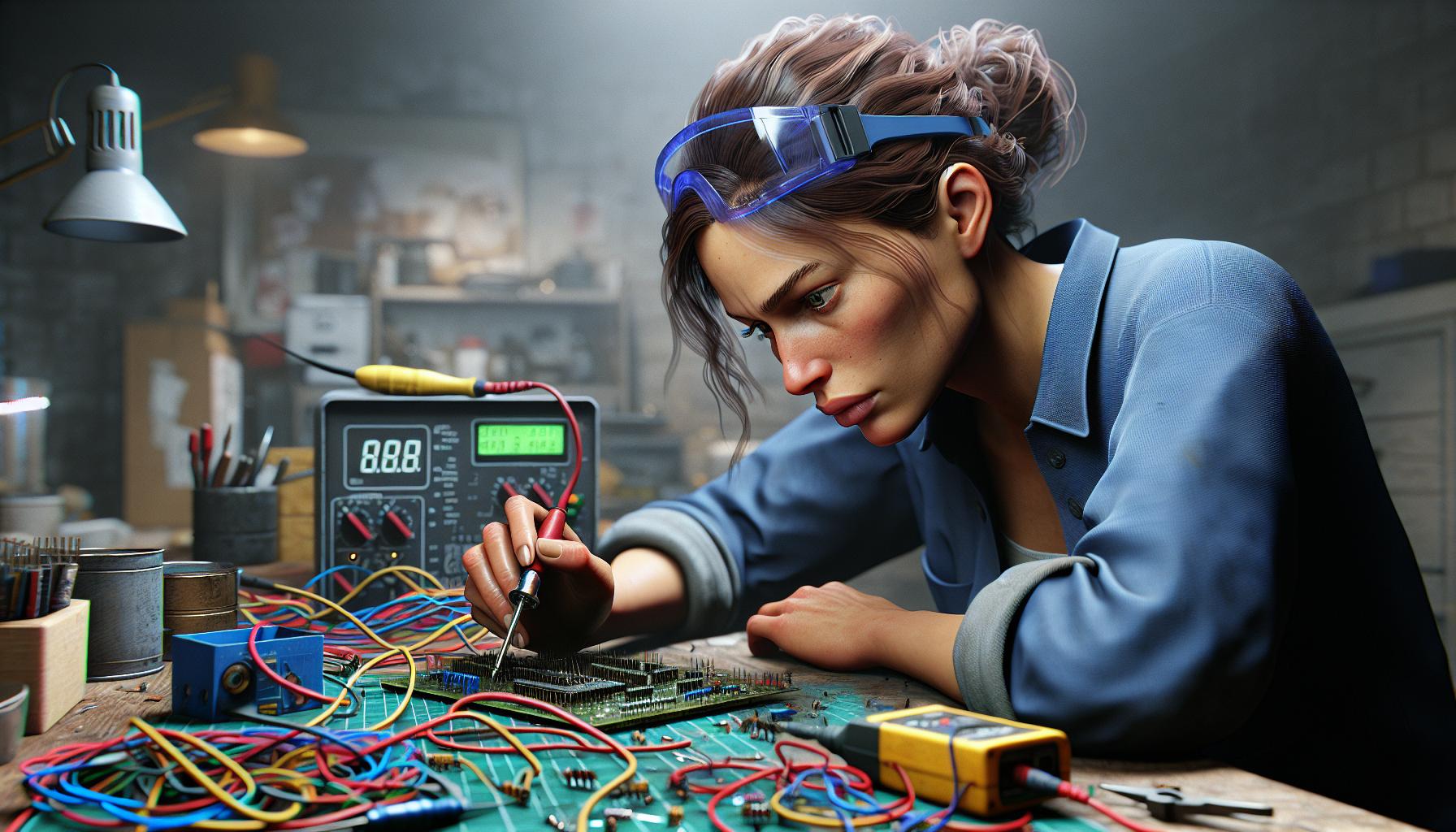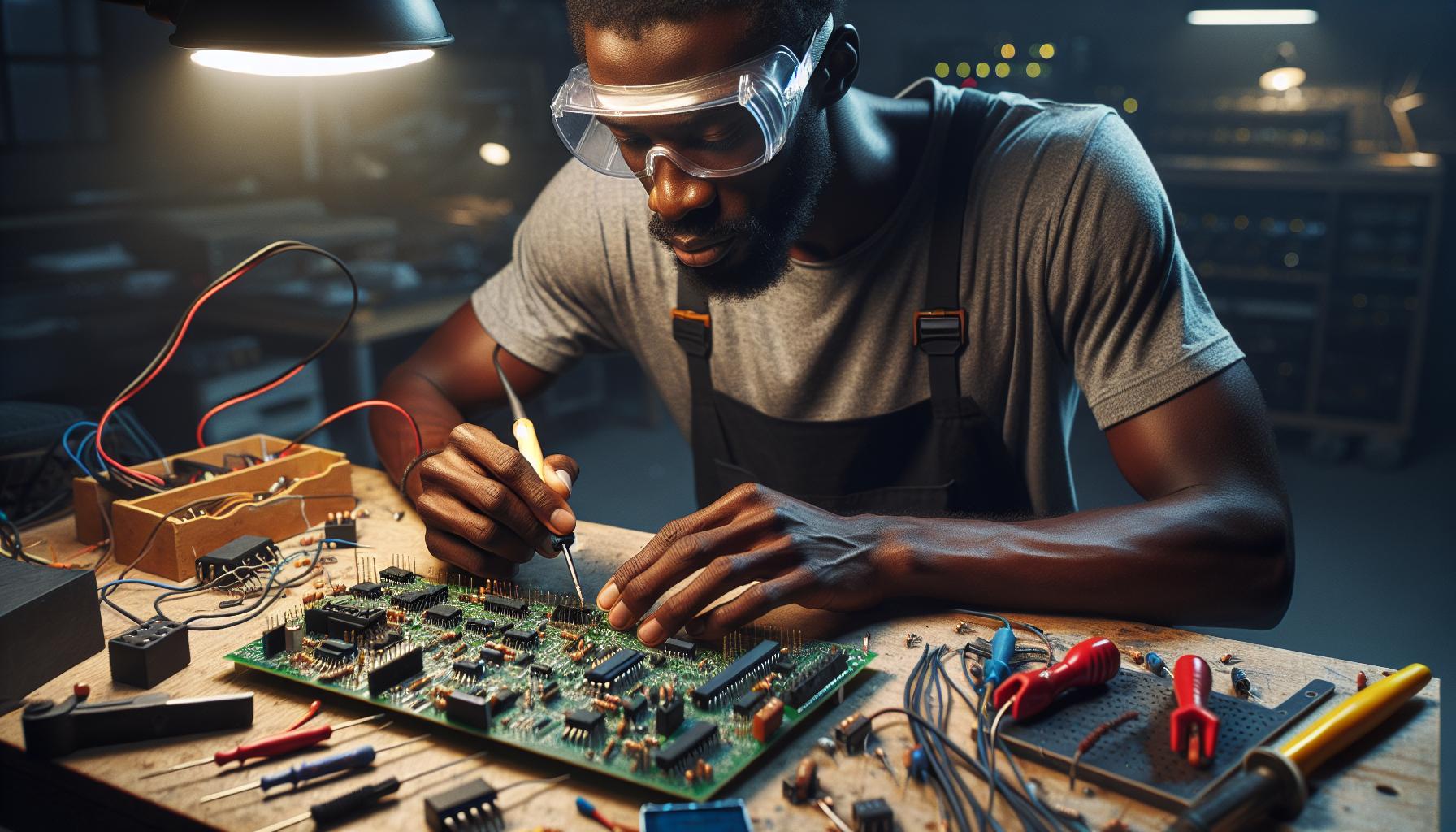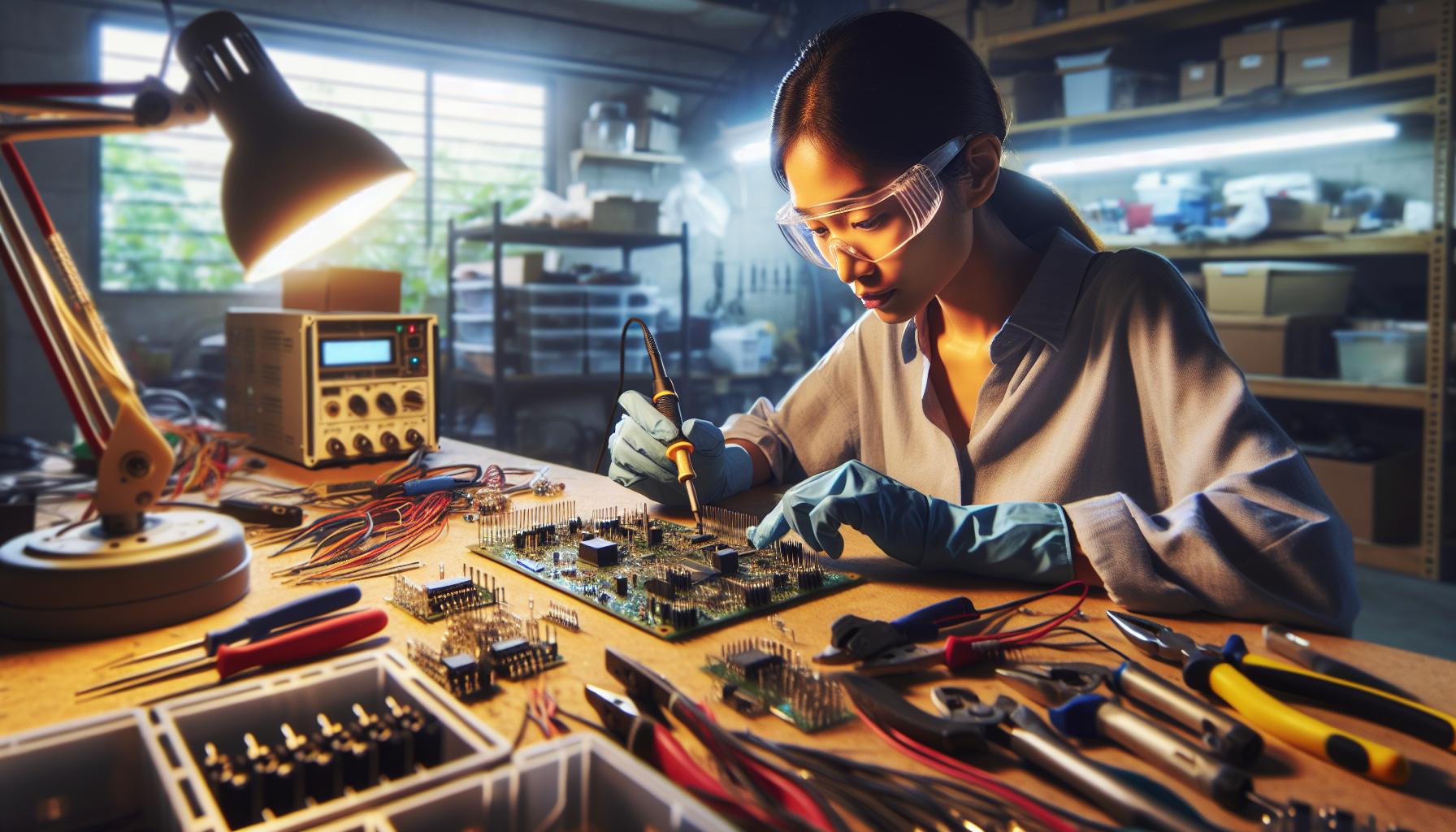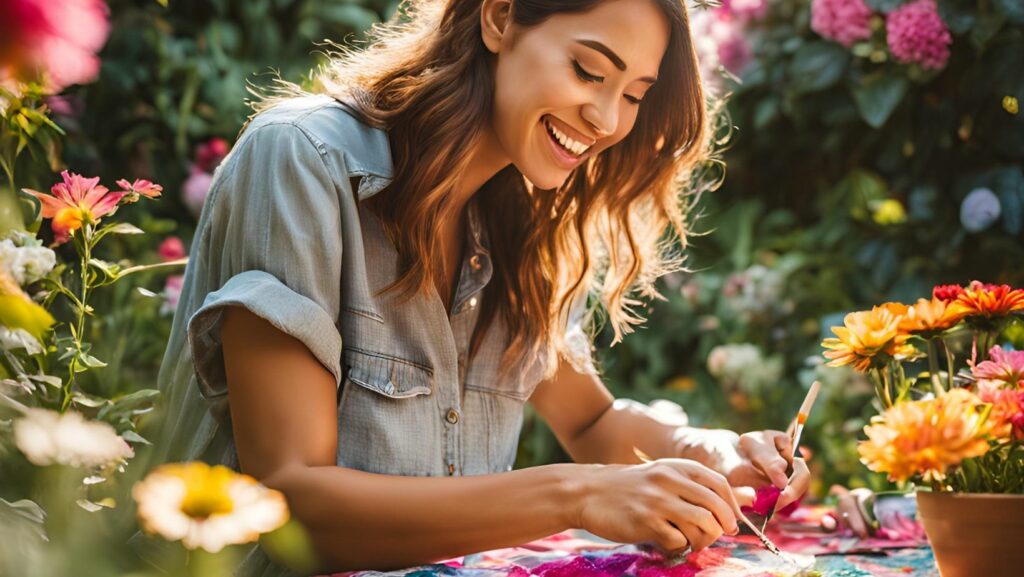
Diving into DIY electronics projects can be an exhilarating journey. From building your own gadgets to understanding the intricacies of circuits, it opens up a world of creativity and innovation. I’ve always found that the hands-on experience not only enhances my technical skills but also fuels my curiosity to explore more.
Whether you’re a seasoned hobbyist or just starting out, there’s something incredibly satisfying about bringing an electronic project to life. The beauty of DIY electronics lies in its accessibility—many projects require only basic tools and components, making it easy for anyone to get started. Plus, with countless online resources and communities, you’re never alone in your quest to create and learn.
In this article, I’ll share insights and tips to help you navigate the exciting realm of DIY electronics. Whether you’re aiming to build a simple LED circuit or a more complex microcontroller project, there’s no limit to what you can achieve.
Key Takeaways
- Engaging in DIY electronics projects fosters creativity and enhances technical skills, offering a hands-on learning experience that is suitable for both beginners and advanced enthusiasts.
- Many DIY electronics projects are accessible, requiring only basic tools and components, and are supported by abundant online resources and communities.
- Essential tools for DIY electronics projects include a soldering iron, multimeter, wire cutters and strippers, and a breadboard, while understanding core components like resistors, capacitors, and transistors is crucial.
- Popular DIY projects range from beginner-friendly LED blinkers to advanced IoT home automation and quadcopter drones, each providing unique challenges and learning opportunities.
- Safety precautions and awareness of common mistakes are vital for successful project execution, along with technical proficiency, creativity, and careful planning.
- A variety of resources such as online courses, tutorials, forums, books, and YouTube channels are available to support learning and development in DIY electronics.
DIY Electronics Projects
DIY electronics projects combine creativity with technical skill, allowing enthusiasts to bring ideas to life. Projects range from beginner-friendly to advanced levels, catering to different interests and expertise. Beginners often start with simple projects like LED blinkers, which require basic components such as resistors and batteries.
Intermediate projects might involve microcontrollers like Arduino or Raspberry Pi. These devices enable more complex creations, including automated systems or Internet of Things (IoT) devices. Understanding coding and circuits is crucial for such projects.
Advanced projects may integrate Bluetooth or Wi-Fi connectivity, involving skills in both electronics and software programming. These projects often serve practical applications, like remote-controlled devices or home automation systems.
Each project provides hands-on experience, enhancing problem-solving skills and technical knowledge. Completing tasks within DIY electronics can ignite a passion for engineering and innovation.
Essential Tools and Materials

Embarking on DIY electronics projects opens up a world of creativity and innovation. Equipping oneself with the right tools and materials ensures a smooth and efficient building process.
Basic Tools Required
Having the right tools makes a significant difference in DIY electronics. Here are essential tools I use regularly:
- Soldering Iron: Precision soldering irons are vital for joining electronic components. It’s ideal for connections requiring secure and durable bonds.
- Multimeter: This device aids in measuring voltage, current, and resistance. It helps in diagnosing circuit issues effectively.
- Wire Cutters and Strippers: These are crucial for cutting wires and removing insulation. Ensuring a clean cut is essential for creating reliable connections.
- Screwdrivers: Small, precise screwdrivers come in handy for assembling and disassembling electronics. They offer the dexterity needed for tight and confined spaces.
- Breadboard and Jumper Wires: Breadboards provide a platform for prototyping without soldering. They facilitate the iterative design process.
Important Electronic Components
Understanding various electronic components is key to successful DIY projects. Here are core components I often incorporate:
- Resistors: These control the electrical current in circuits. They’re essential for protecting sensitive components.
- Capacitors: Vital for storing electrical energy, capacitors stabilize voltage and power flow. They ensure circuits function smoothly.
- Transistors: These are the building blocks of modern electronics. Used for switching and amplifying signals, they play a crucial role in complex circuits.
- Diodes: Diodes ensure current flows in one direction. They’re important for preventing backflow, which can damage circuits.
- Integrated Circuits (ICs): ICs pack multiple electronic functions into a single unit. They’re integral in modern electronics design, enabling complex functions.
Popular DIY Electronics Projects

Exploring popular DIY electronics projects is an exciting way to improve your technical skills. Starting with beginner-friendly designs, advancing through intermediate builds, and tackling complex advanced projects helps broaden your knowledge and capabilities.
Beginner-Friendly Projects
LED Blinker: Creating a simple LED blinker is perfect for beginners. It only requires a 555 timer IC, resistors, capacitors, an LED, and a breadboard. It’s a great way to learn basic circuit connections.
Battery Tester: Building a battery tester involves using a multimeter and a few resistors. This project teaches you about voltage levels and how to measure electrical quantities effectively.
Simple Alarm System: This straightforward project uses a buzzer, a switch, and a simple circuit to create a basic alarm system. It’s an excellent introduction to circuit design.
Intermediate Projects
Arduino Weather Station: Assemble an Arduino weather station using a microcontroller, sensors, and an LCD display to monitor temperature and humidity. It combines hardware and software skills.
Raspberry Pi Surveillance Camera: Use a Raspberry Pi board and a camera module to create a surveillance system. This project involves coding and hardware assembly.
Bluetooth Speaker: Crafting a Bluetooth speaker requires a Bluetooth module, amplifier board, and speakers. It’s a rewarding project that blends audio electronics with wireless technology.
Advanced Projects
IoT Home Automation: Building an IoT home automation system with a Raspberry Pi or Arduino, along with sensors and actuators, demands understanding of networking and programming.
Quadcopter Drone: Constructing a quadcopter involves motors, a flight controller, and a robust frame, offering challenges in aerodynamics and control algorithms.
Smart Mirror: Create a smart mirror using a monitor, two-way mirror film, and a Raspberry Pi. This complex project requires knowledge in coding and electronics integration.
Tips for Successful DIY Electronics

To successfully execute DIY electronics projects, understanding effective strategies is essential. These guidelines will maximize both enjoyment and learning.
Safety Precautions
Prioritizing safety ensures a secure working environment. Wear safety goggles to protect your eyes from solder splashes or small component fragments. Work in a well-ventilated area to avoid inhaling hazardous fumes from soldering or burning components. Keep liquids away from your workspace to prevent accidental spills on electronic components.
Common Mistakes to Avoid
Avoiding pitfalls enhances project outcomes and learning experiences. Always double-check connections before powering up your circuit to prevent short circuits, which can damage components and pose safety hazards. Read and understand datasheets or specifications for each component to ensure compatibility and correct usage in your project. Take breaks when working on complex projects to maintain focus and reduce the likelihood of making errors due to fatigue.
Recommended Resources for Learning
Exploring the world of DIY electronics can be both rewarding and challenging. To bolster success, I’ve curated essential learning resources to guide enthusiasts at all levels.
1. Online Courses
Platforms like Coursera, edX, and Udemy offer structured courses on electronics principles and project-based learning. These courses range from basic circuit design to complex microcontroller programming.
2. Tutorials and Guides
Instructables and Hackster provide step-by-step guides and community-driven projects. These platforms facilitate learning by offering detailed instructions on a myriad of projects, encouraging experimentation.
3. Forums and Communities
Communities like Reddit’s r/diyelectronics and Stack Exchange enable interaction with fellow hobbyists. Here, learners can ask questions and share experiences, gaining insights from others’ challenges and solutions.
4. Books
Books such as “Make: Electronics” by Charles Platt and “The Art of Electronics” by Paul Horowitz and Winfield Hill offer in-depth knowledge. They cover fundamental theories and practical applications, building a solid foundation in electronics.
5. YouTube Channels
Channels like “Afrotechmods” and “GreatScott!” offer visual demonstrations and insights into electronics projects. These channels provide visual learners with a clear understanding of complex concepts through engaging content.
Utilizing these resources, I enhance my skills, troubleshoot effectively, and continuously expand my DIY electronics repertoire.
Electronics Projects
Embarking on DIY electronics projects is a rewarding journey that combines creativity with technical skill. Whether you’re a beginner experimenting with simple circuits or an advanced enthusiast tackling complex IoT systems, there’s always something new to learn and explore. By equipping yourself with the right tools and resources, you can confidently dive into this fascinating world and enhance your problem-solving abilities. Remember, each project is an opportunity to ignite your passion for innovation and engineering. So gather your components, follow your curiosity, and let your creativity lead the way.


